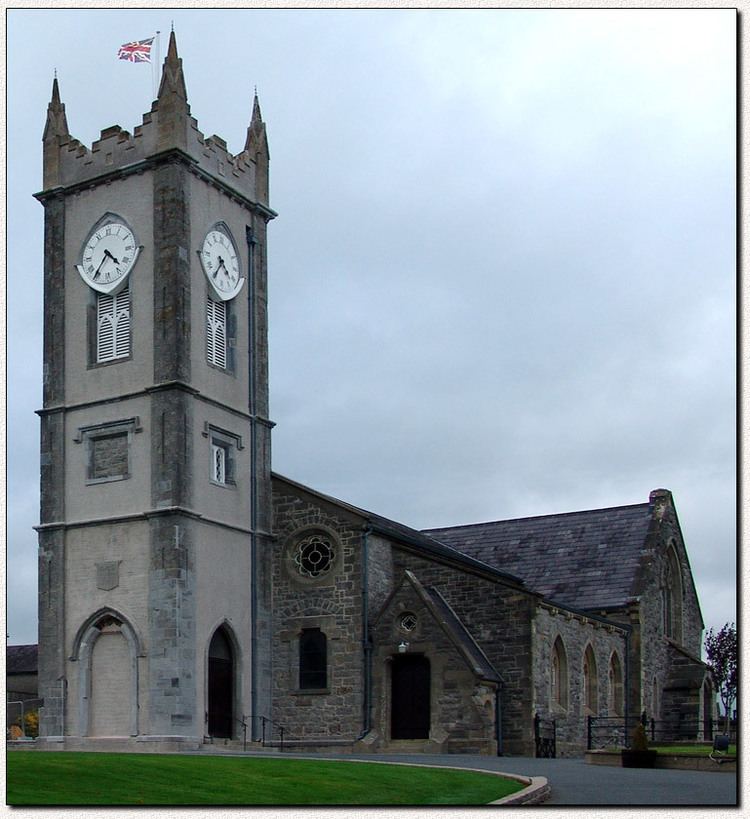Population 2,129 (2011 Census) Sovereign state United Kingdom Province Ulster Dialling code 028 | Irish grid reference H7962 Local time Monday 6:14 PM | |
 | ||
Weather 6°C, Wind W at 21 km/h, 80% Humidity UK parliament constituency | ||
The Moy (from Irish: an Maigh, meaning "the plain") is a Large Village and townland in County Tyrone, Northern Ireland, United Kingdom about 5 miles (8 kilometres) southeast of Dungannon and beside the smaller village of Charlemont. Charlemont is on the east bank of the River Blackwater and Moy on the west; the two are joined by Charlemont Bridge. The river is also the boundary between County Tyrone and County Armagh. The 2011 Census recorded a population of 2,129.
Contents
- Map of Moy Dungannon UK
- History
- The Troubles
- Former railway
- Places of interest
- Sport
- Schools
- Demography
- References
Map of Moy, Dungannon, UK
History
Moy (mostly known by locals as "The Moy") was laid out in the 1760s for the Volunteer Earl – the patriot and aesthete James Caulfield, 1st Earl of Charlemont (1728-1799) – opposite Charlemont Fort across the Blackwater. The formal rectangular market place, with lawns and horse-chestnut trees, was inspired by the square at Bosco Marengo in Lombardy, admired by the young earl during his grand tour of Europe. The houses lining the village square are mostly mid-18th century, though all four churches (Roman Catholic, Church of Ireland, Presbyterian and Methodist) are later. Moy used to hold a great horse fair, held once a month and lasting a whole week.
The Troubles
The Troubles in Moy recounts incidents during, and the effects of, The Troubles in Moy, County Tyrone, Northern Ireland.
Incidents in Moy during the Troubles resulting in two or more fatalities:
1973
1975
1976
'1991
1992
Former railway
The Portadown – Dungannon section of the Portadown, Dungannon and Omagh Junction Railway (PD&O) opened in 1858. Its nearest station to Moy was optimistically called Trew and Moy, although it was at Trew Mount over 2 miles (3 kilometres) north of Moy. In 1876 the PD&O became part of the new Great Northern Railway. The Ulster Transport Authority took over the line in 1958 and closed it in 1965.
Places of interest
Moy features a cast-iron gate and screen set up in the 19th century to provide the grand entrance to the now-vanished Roxborough Castle. The richly modelled metalwork is thought by some to have been the work of the company of the celebrated Dublin iron-founder Richard Turner, best known for his conservatories in Dublin, Belfast and Kew Gardens. Turner designed a conservatory for the house c. 1850.
Sport
Moy has a long history of horse riding and Gaelic games.
Schools
Demography
Moy is classified as a "Large Village" by the NI Statistics and Research Agency (NISRA) (i.e. with population between 2,000 and 5,000 people). On Census day 2011 there were 2,129 people living in Moy. Of these:
